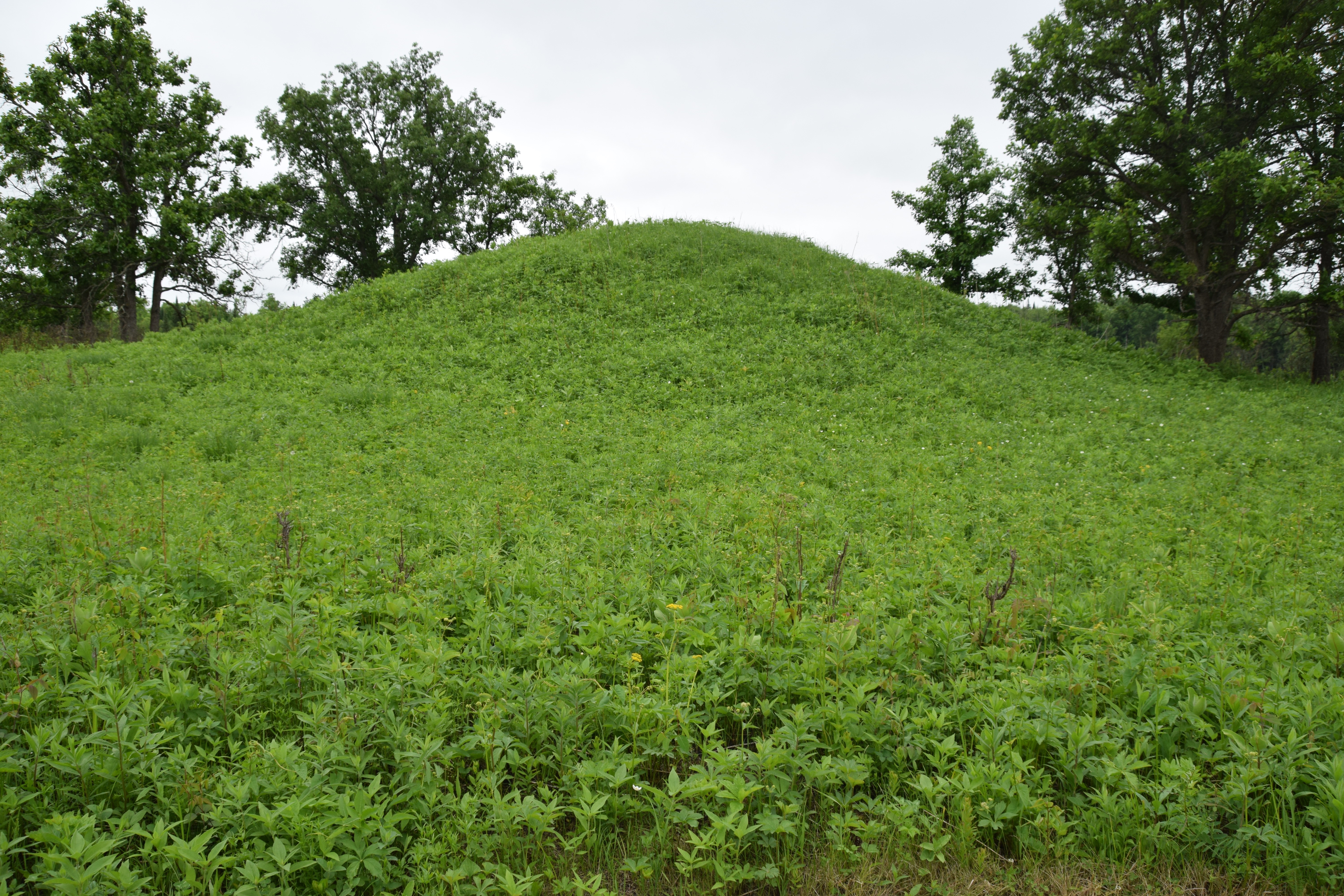Manitou Mounds

The Manitou Burial Mounds
Taking a walk along the “reserve by the river bend” with Jeremiah Johnston, Du Vernet remarked that they “passed two Indian mounds, prehistoric, the Indians will not allow them to be opened.” Though some of the famous Manitou burial mounds have been opened by settlers and archaeologists, today the Ojibwe continue to guard the mounds from outside intrusions.
The Manitou burial mounds sit adjacent to the Long Sault Rapids on the north shore of the Rainy River, between the towns of Fort Frances and Rainy River. The Canadian government declared the Manitou burial mounds a national historic site in 1969 and the mounds are currently cared for by the Ojibwe Kay-Nah-Chi-Wah-Nung Historical Center. These mounds are the largest group of burial mounds and associated village sites in Canada. Archeologists have associated the burial mounds with the Blackduck Peoples (approximately 300 – 800 years ago) and the larger older mounds with the Laurel Peoples (300 B.C.E. – 1100 C.E.).
Elder Willie Wilson’s Thoughts on the Burial Mounds
On our visit to Rainy River First Nation in June 2016, we asked Elder Willie Wilson about the Manitou Burial Mounds. He told us that the Rainy River Ojibwe have a complex relationship with the mounds. Willie explained that Indigenous Peoples have a responsibility to the land: “whether Sioux or Ojibwe we have a duty to look after the mounds.” He explained that although the Blackduck and Laurel Peoples are not directly the ancestors of the Ojibwe, “it all comes back to the land. The land connects us to this earlier history.” The Ojibwe have become the current caretakers of the mounds; Willie referred to himself and his community as the “stewards of the mounds.”
Willie shared an important lesson with us by explaining how histories are inscripted on the land both metaphorically through stories, and quite literally as in the case of the burial mounds. But Willie was not only explaining a theory of history, he was also espousing an ethic of respecting and honouring the land. He explained how our histories are intertwined with one another because they are inscribed on the land. Honouring and respecting the land means recognizing its history, which includes respecting the cultures and histories of others who have come before, burying their ancestors in the mounds, and leaving their traces on the land.
For more information on the Manitou burial mounds visit the Kay-Nah-Chi-Wah-Nung Historical Center website, or go see them for yourselves!
Sources: